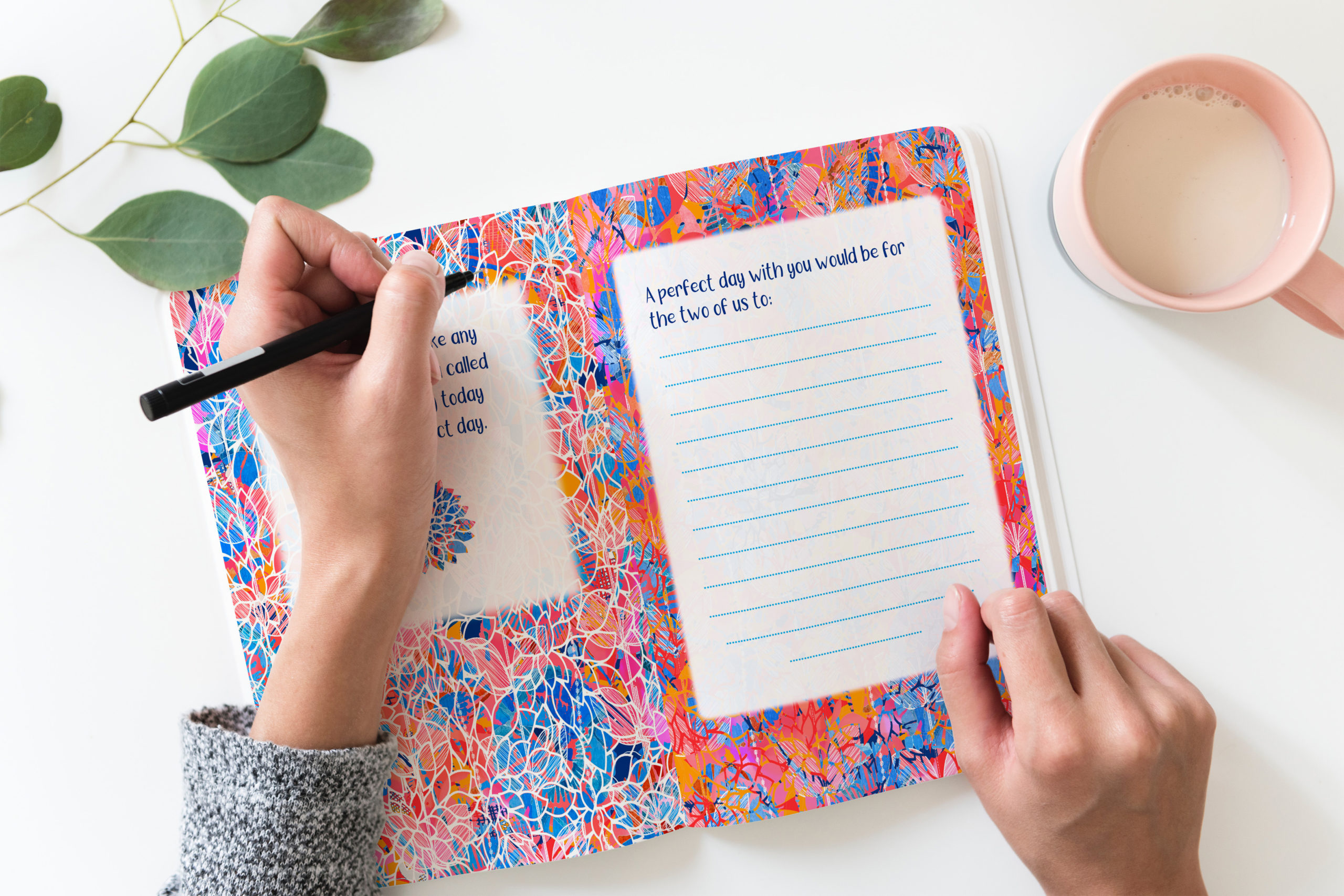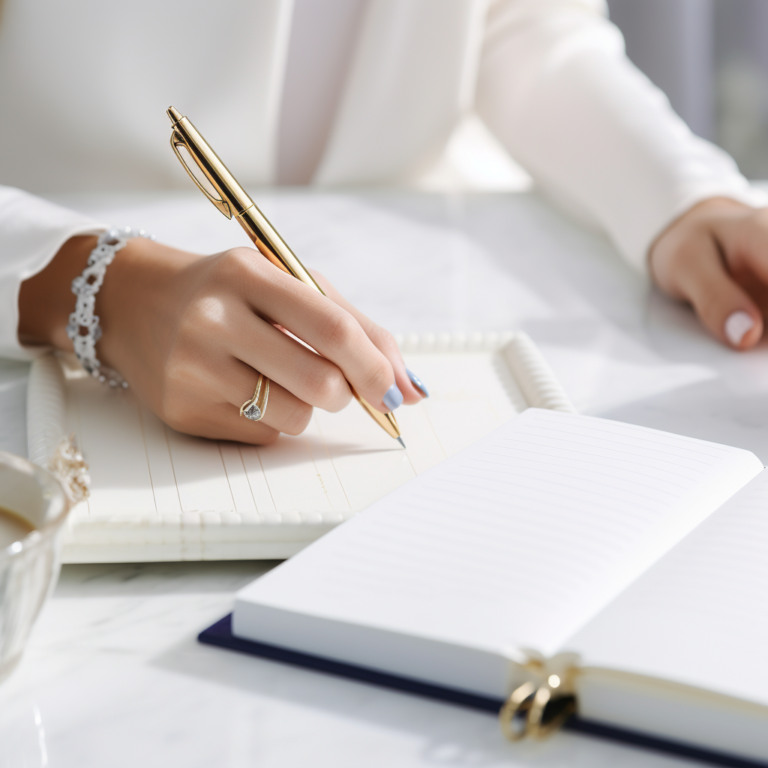The Power of Journal Writing for Self-Discovery
Hi, I’m Kate, and I’m a little obsessed with journaling. It’s a tool , a comfort, and a friend. Through it, I get past the noise of the everyday world, and get to know myself, my own thoughts (not those imposed by social media, advertising, or those around me), my dreams and desires. Now, I…
Hi, I’m Kate, and I’m a little obsessed with journaling. It’s a tool , a comfort, and a friend. Through it, I get past the noise of the everyday world, and get to know myself, my own thoughts (not those imposed by social media, advertising, or those around me), my dreams and desires. Now, I want to share this wonderful tool with you, and to show you how you can get the most out of your own journey into journaling.
Why Write in a Journal?
Journal writing has been used for centuries as a way to record and reflect on one’s experiences. The act of putting pen to paper helps to organize our thoughts and clarify our emotions. Writing in a journal can be a therapeutic tool to reduce stress and anxiety, improve mood, and increase self-awareness. Some of the key benefits of journal writing include:
- Gaining insight into your thoughts, beliefs, and values
- Identifying patterns in your behavior and emotions
- Exploring your deepest desires and dreams
- Clarifying your goals and aspirations
- Reducing stress and anxiety
- Enhancing creativity and self-expression
- Improving communication skills
- Processing difficult emotions and experiences
- Increasing self-awareness and self-acceptance
- Developing a stronger sense of self
- Keeping you on track to meet – and exceed – your goals
How to Get Started with Journal Writing
Getting started with journal writing can be intimidating, especially if you’re not used to writing regularly. Here are some tips to help you get started:
- Choose a journal that appeals to you, one that calls to you – after all, you are going to spend a bit of time with it. It can be a plain notebook or something more decorative. The most important thing is that you like the journal and feel inspired to write in it.
- Find a quiet and comfortable place to write. This could be a cozy corner of your home, a park, or a coffee shop. For some writers, earphones are an option, whether to block out sound and outside distractions, to listen to soothing background music, or both.
- Set aside a regular time for writing. Whether it’s first thing in the morning or before bed, find a time that works for you and stick to it.
- Write without judgment. Don’t worry about grammar, spelling, or punctuation. The most important thing is to get your thoughts down on paper.
- Be honest with yourself. Writing in your journal is one of the only times when you can meet yourself fully – when you’re not putting on a face or an attitude or a persona for the outside world. Give yourself the grace to be fully honest, even with the hard issues.,
- Start with a prompt. If you’re not sure what to write about, start with a prompt. Some examples include: “What am I grateful for today?” or “What are my goals for the next year?”
- Write freely. Let your thoughts flow and don’t censor yourself. This is your space to express yourself without judgment.
- Review and reflect on your writing. Periodically go back and read what you’ve written. Look for patterns and themes in your writing that can provide insight into your thoughts and emotions.
Types of Journal Writing
There are many different types of journal writing, each with their own benefits. Here are some brief examples, with more in depth suggestions and recommendations coming in later posts:
Gratitude Journaling
Gratitude journaling involves writing down things you are grateful for each day. This can help to shift your focus from what you don’t have to what you do have, and increase feelings of happiness and contentment.
Dream Journaling
Dream journaling involves recording your dreams each morning. This can help you uncover hidden desires and fears, and provide insight into your subconscious mind.
Mindfulness Journaling
Mindfulness journaling involves focusing on the present moment and recording your thoughts and emotions in the moment. This can help to reduce stress and increase self-awareness.
Creative Journaling
Creative journaling involves using art, poetry, or other creative forms of expression in your journal. This can help to enhance creativity and self-expression. Leonardo DaVinci used journals to jot down his ideas and sketches for new inventions and art pieces, and we’re lucky to still have them in the world today.
Manifestation Journaling
Manifestation journaling involves writing down your dreams and aspirations – sometimes with photos and blurbs as support – both to clarify what you want, as well as to focus energy on getting it.
Growth Journaling
This is similar to Manifestation Journaling, but it is more about personal growth than drawing outside things into your life. An athlete might use it to chart her progress, to envision the outcome of a sports event, to put words to her objectives. A shy person might use it to clarify his desire to build confidence, and to examine the steps he takes along that path.
Tarot Journaling
Every morning, after my morning meditation, I spend about 15 minutes with my tarot cards. This involves shuffling the deck while I think about the day ahead. I then lay out a spread of 3 cards. The first one I call “What I Need to Know”, the second is “A New Perspective”, and the third is “Action to Take.” I then journal about the thoughts that come to me. I’ll write all about this soon – and you’ll be surprised at just how powerful this type of journaling is!
Grief Journaling
When you’ve suffered a significant loss, for instance the death of a loved one, the end of a career, or a debilitating injury, you experience A LOT of emotions. Journaling offers a safe space to rage and scream and cry, to release the emotions that are choking you. We’ll talk soon about the importance of Grief Journaling.
Mindfulness Journaling
Mindfulness journaling is almost like meditation, but on paper. It is something that captures you physically – for instance, coloring in an adult coloring book – while allowing your mind to slip away into a different state. Its benefits include stress relief, enhanced creativity, and even improved clarity of purpose.
Shared Journaling
There is a special way of journaling that I call Shared Journaling. It is a way of using a journal to connect with another person, whether with a family member, a romantic partner, of a friend. Shared journaling usually includes prompts that you answer with the understanding that you will be sharing what you write with a specific, intended reader. In some cases, it is a back-and-forth, where you each writing in the journal and create an experience together, while other shared journals are meant to be filled out by one writer, and then gifted to the reader.
In Momentary Conclusion
There are many other ways of journaling that you can incorporate into your life, and I’ll cover them all here. If you’re like me, you’ll find journaling so effective and enjoyable that you’ll have a number of different journals going at once. Sitting at my desk, I can see eight different journals that I write in regularly (I like to keep different ones for different purposes, rather than one journal for all my writing). I have others scattered throughout my house, and even one in my car to capture thoughts and ideas on the go.
However you choose to journal, and for whatever purpose, I’m sure you will find that, incorporated as a regular practice, it will improve your outlook, and enhance your life.

